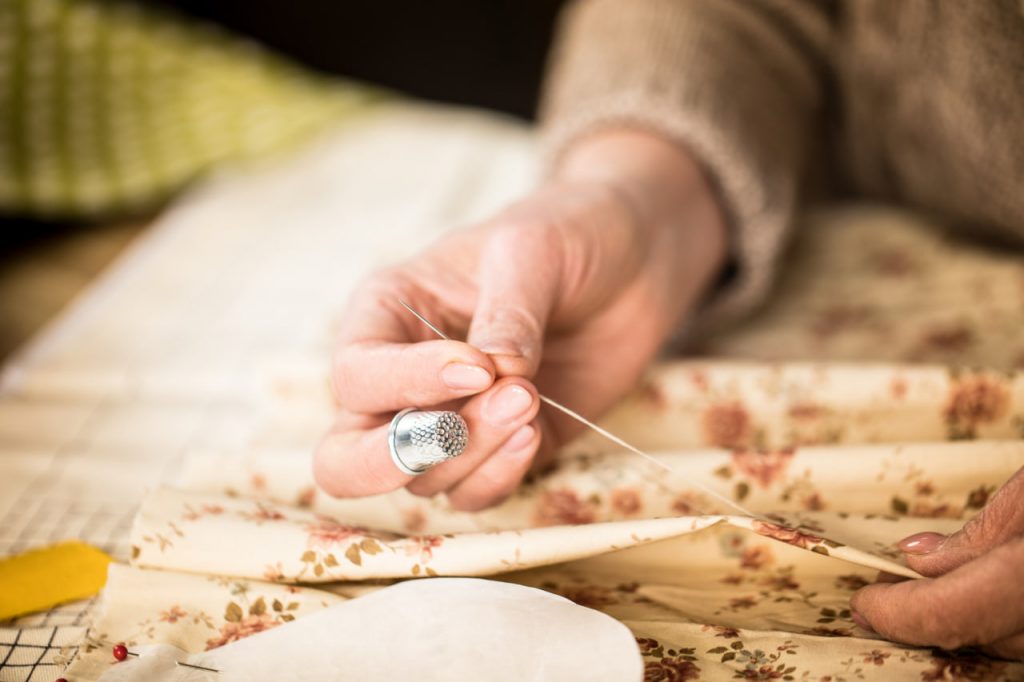Embarking on a textile crafting journey can feel like an exciting new chapter, but for many beginners, knowing where to start can be overwhelming. Luckily, there are a variety of simple and rewarding projects that will help you build your confidence and skills, without feeling too complicated. Whether you’re sewing, quilting, embroidering, or exploring other textile crafts, the key is to start with projects that are manageable yet still allow you to explore your creativity.
In this blog, we’ll walk you through five beginner-friendly textile craft projects you can try today. These projects are designed to teach you essential techniques while allowing you to create beautiful, functional items for your home or wardrobe. Let’s dive in!
1. Sewn Cushion Covers
Creating your own cushion covers is a fantastic beginner project because it allows you to practice basic sewing techniques while enhancing your home decor. Plus, you can customize your cushion covers with fabrics and colors that match your personal style.
Why It’s Great for Beginners:
- Simple sewing skills: Cushion covers typically involve straight stitching and basic finishing techniques, such as hemming and inserting a zipper or envelope flap.
- Customization: You can use any fabric that suits your style, from simple cottons to more textured fabrics like linen or velvet.
- Quick to complete: This project can be done in an afternoon or weekend, and you’ll immediately notice how much it can elevate your space.
How to Get Started:
- Choose your fabric: Pick a fabric that complements your living space. Cotton is a good starting fabric because it’s easy to work with and comes in a variety of patterns.
- Measure your cushions: Measure the size of the cushions you want to cover, adding a seam allowance for stitching.
- Cut your fabric: Cut your fabric into the appropriate size and shape (typically, two equal pieces for the front and back).
- Sew the pieces together: Sew the front and back pieces together, leaving an opening for inserting the cushion. You can choose to use a zipper, buttons, or an envelope-style opening.
- Finish the edges: Depending on your fabric, you may want to finish the raw edges to prevent fraying (overlocking or pinking shears work well for this).
2. Embroidered Wall Art
If you’re looking to add a personal touch to your home or try a slower, more meditative project, embroidery is a fantastic place to start. Embroidered wall art allows you to experiment with basic stitches while creating a piece of art that is uniquely yours.
Why It’s Great for Beginners:
- Minimal tools: All you need is fabric, an embroidery hoop, a needle, and embroidery floss or thread. These are relatively inexpensive tools that are easy to find.
- Beginner-friendly stitches: Start with basic stitches like the running stitch, back stitch, and French knots. Once you’re comfortable, you can experiment with more advanced techniques.
- Personalization: Embroidery gives you the freedom to create designs that match your aesthetic. You can make anything from floral designs to inspirational quotes, abstract patterns, or even custom illustrations.
How to Get Started:
- Pick your design: Choose a simple design to start with, such as a flower, heart, or geometric shape.
- Select your fabric and hoop: A cotton fabric is great for beginners, and a small embroidery hoop (6 inches or less) works well for small projects.
- Transfer the design: Use fabric markers or tracing paper to transfer your design onto the fabric.
- Start stitching: Thread your needle and practice the basic stitches on the fabric. You can find plenty of beginner tutorials online to guide you.
- Frame your work: Once you’re done, simply trim the fabric and mount it in the hoop for display.
3. No-Sew Fabric Bunting
A fun and easy project, no-sew fabric bunting is perfect for beginners looking to create a festive and decorative item. Whether you’re preparing for a party, a special occasion, or simply want to add some cheer to your space, this project is quick, simple, and requires no sewing skills.
Why It’s Great for Beginners:
- No sewing required: You don’t need to know how to sew, as this project uses fabric glue or iron-on adhesive to attach the fabric to the string.
- Quick and fun: Bunting is a fast project that can be completed in a short amount of time. Plus, you get to experiment with fabric patterns and colors.
- Versatile: You can use bunting to decorate for holidays, birthdays, or just to add some charm to a child’s room or a special event.
How to Get Started:
- Cut your fabric: Cut fabric into triangle or pennant shapes. You can make them as large or small as you like, depending on the look you’re going for.
- Attach to string: Use fabric glue or iron-on adhesive to attach the fabric pieces to a length of ribbon, twine, or string. You can also add beads or tassels to personalize your bunting further.
- Hang it up: Once the fabric pieces are securely attached, hang your bunting on the wall, across a window, or above a table for an instant decor upgrade.
4. DIY Fabric Storage Baskets
Fabric storage baskets are practical, stylish, and super easy to make. They’re a great way to practice sewing straight lines and creating a functional, decorative item for your home. These baskets are perfect for storing anything from toys and craft supplies to toiletries and blankets.
Why It’s Great for Beginners:
- Simple construction: Sewing a fabric basket involves basic straight stitches and a bit of creativity with the design (e.g., adding handles or decorative trims).
- Quick to make: You can complete a small storage basket in a few hours, making it a satisfying project to tackle in a short amount of time.
- Practical use: Not only will you create a useful item, but you can personalize the baskets to match your home’s decor.
How to Get Started:
- Choose your fabric: Select a sturdy fabric like canvas, denim, or thick cotton for the outer layer of the basket. You can add a softer inner lining for a polished look.
- Cut the fabric: Cut the fabric into a rectangle for the sides, a circle for the base, and extra pieces for handles if desired.
- Assemble the basket: Sew the sides of the basket together and attach the base. If you’re adding handles, sew them to the top edge of the basket.
- Finish the edges: You can use a zigzag stitch or bias tape to finish the raw edges, giving your basket a neat, professional look.
5. Personalized Tote Bag
A personalized tote bag is both a functional and customizable project that will help you practice sewing, while also offering a creative outlet. Whether you’re using it for groceries, shopping, or just as a stylish accessory, a handmade tote bag is a great introduction to sewing.
Why It’s Great for Beginners:
- Basic sewing skills: Sewing a tote bag is a great way to practice sewing straight lines and handling fabric. It’s also an excellent way to learn how to create and attach handles.
- Customizable: You can personalize the tote bag with embroidery, fabric paint, patches, or even a unique fabric choice.
- Practical: Once you’re done, you’ll have a stylish, durable tote bag to use in everyday life.
How to Get Started:
- Cut your fabric: You’ll need two identical pieces for the front and back of the bag, and two long strips for the handles. A heavy cotton or canvas fabric works best for durability.
- Sew the bag: With right sides facing together, sew the sides and bottom of the fabric pieces. Turn it right-side out, then fold and sew the top edge.
- Attach the handles: Fold your handle pieces in half, sew them down, then attach them to the top of the bag.
- Add personalization: To make the bag truly unique, try adding a pocket, embroidery, or fabric paint to customize it.

